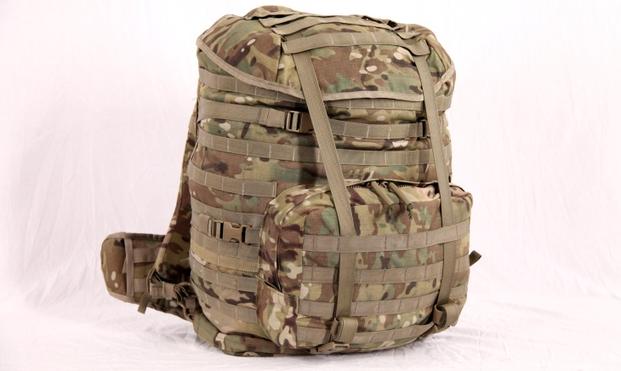U.S. Army airborne and Ranger units are testing a new, jumpable pack with a built-in equipment harness.
The MOLLE 4000 is the Army’s new airborne rucksack, designed to satisfy requests from paratroopers for a pack that’s smaller than the large MOLLE ruck but with more capacity than the medium MOLLE that the Army introduced in 2009 for up to 72-hour missions.
“There was no kind of in-between capability,” Col. Dean Hoffman IV, the head of Army’s Project Manager Soldier Protective and Individual Equipment, told Military.com.
Equipment officials worked with the 82nd Airborne Division to design the new pack, which will hold approximately 4,000 cubic inches worth of kit, Hoffman said. The large MOLLE ruck – short for Modular Lightweight Load-carrying Equipment – holds about 5,000 cubic inches. The medium MOLLE holds about 3,000 cubic inches.
The new pack has a single-point release harness built into the bottom.
“This new rucksack actually has it to where it is integrated into the ruck,” Hoffman said. “You can literally just zip it back up, throw your attaching straps in there and you are ready to go.”
The MOLLE 4000 uses the same hard plastic frame as the U.S. Marine Corps ruck system.
“Everybody loved the ALICE pack because it had a metal frame,” Hoffman said. “Then there was some concern about the plastic frame and it breaking, but I will tell you, we have been dropping these things for a while, and we haven’t had one report yet that it broke. Innovation in industry is getting materials that can withstand large, heavy packs being dropped.”
Equipment officials are also looking at putting lighter materials into the final version of the pack, such as 500 denier Cordura instead of the traditional 1,000 denier.
“We are looking at where do we need 1,000 denier, if any, and were we can get by with 500,” Hoffman said.
The MOLLE 4000 is currently being tested by the 82nd Airborne, the 75th Ranger Regiment as well as airborne troops in Alaska and Hawaii, Hoffman said. The plan is to get soldier feedback, make any changes that are need and field the new pack sometime in 2019.










